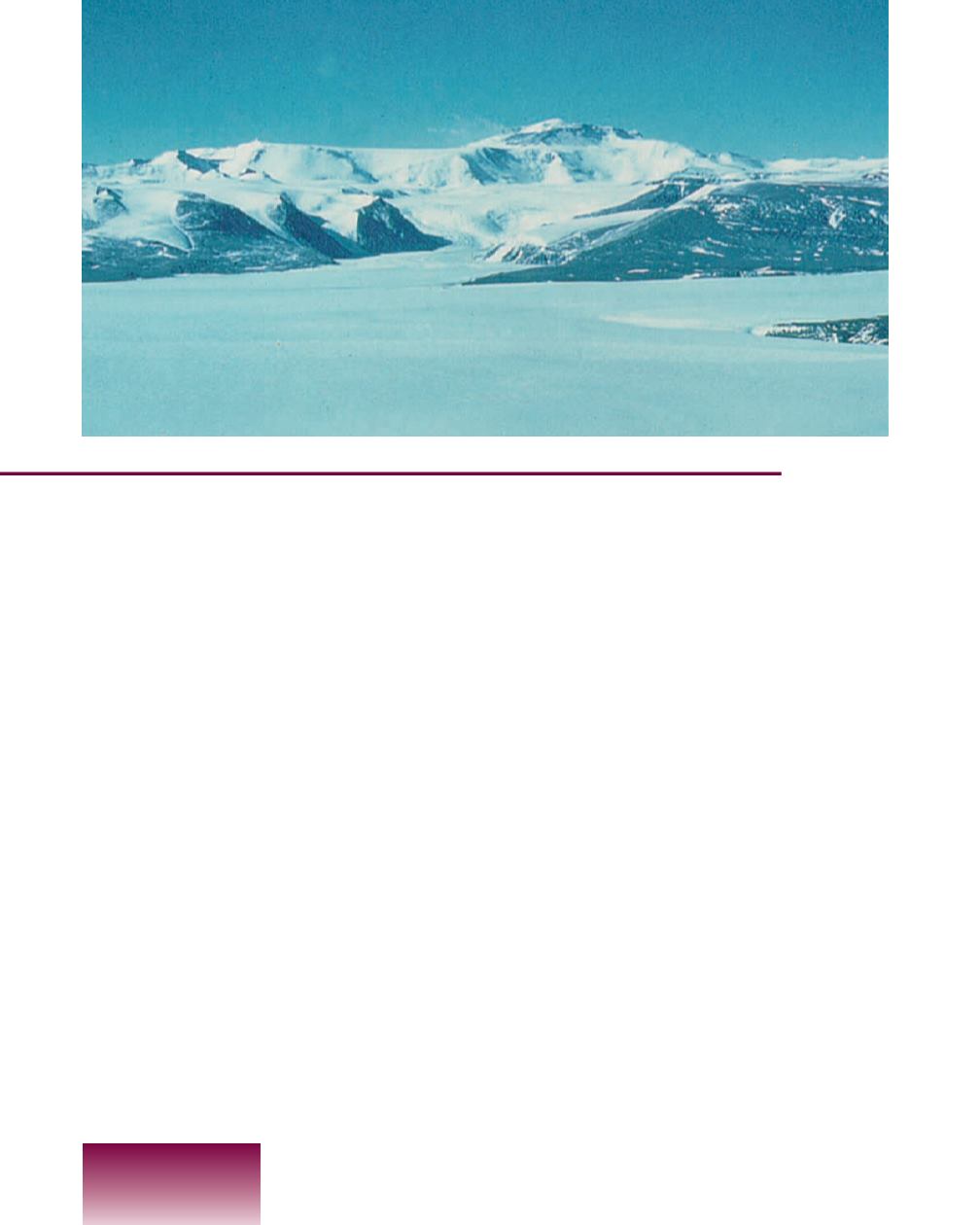
14
●
Chapter 1
Gettysburg, between the Piedmont and the
Ridge and Valley regions, was caused by
faulting. Partsof theAlleghenyPlateauwere
also caused by faulting.
Glaciers
A
bout amillionyears ago, the climate
of North America became much
colder. This meant longer winters
and more snow that did not melt. This
snow changed to thick sheets of ice. Ahuge
mass of ice that moves very slowly down a
mountain or along a valley is called a
glacier
. Because of their tremendous
weight, these ice sheets began to move
slowly south from theNorthPole. This time
became known as the Ice Age.
During this Ice Age, huge glaciers once
reached south intoPennsylvania’sAllegheny
Plateau. They covered the northeast and
northwest parts of Pennsylvania. They
moved as far south as Allentown.
As they slowlymoved, glaciers first wore
away or changed our physical features.
They placed enormous weight and pressure
on the land’s surface. Like giant power
shovels, they dug and gouged out large
parts of the earth. Glaciers created many
small lakes, scratched narrow channels for
rivers, and made some valleys wider and
deeper.
Pine Creek Gorge
, known as the
Grand Canyon of Pennsylvania
, was carved
out by glaciers.
When the climate became warmer, the
glaciers graduallymelted. Thisoccurred first
in the southern parts of the glaciers.
Through thousands of years, the melting
glaciers crept northward. Great amounts of
water filled the huge holes that remained
where theglaciershad cut away the soil and
rocks. LakeErie and theother
Great Lakes
were formed by glaciers. Water running off
the glaciers helped to form ourmanymiles
of creeks, streams, and rivers.
Glaciers also built up new landforms. As
theymovednorth, they left behindboulders
and rocks they had picked up. Sometimes,
Lake Erie and the PoconoMountains were created by glaciers during the Ice Age.


